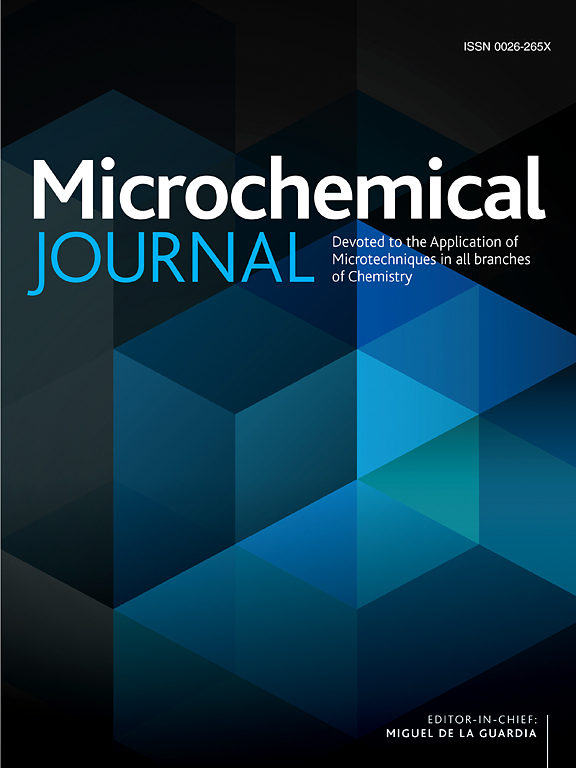用于糖尿病无创诊断的傅立叶红外光谱技术的进展:基于血液、尿液和唾液样本的分析与应用前景
IF 4.9
2区 化学
Q1 CHEMISTRY, ANALYTICAL
引用次数: 0
摘要
糖尿病是一种常见的代谢性疾病,通常通过分析血液样本来诊断。以血液分析为基础的生化检测虽然具有很高的准确性,但其本身涉及侵入性程序,给患者带来后勤方面的不便,因此有必要探索其他诊断方式。近年来,傅立叶变换红外光谱(FTIR)已成为一种快速、灵敏、经济、无创的糖尿病诊断方法,为推进糖尿病管理策略提供了一条新途径。本综述全面总结了近年来的研究现状,重点介绍了在糖尿病诊断中应用傅立叶变换红外分析检测生物体液的情况。综述介绍了通过分析三种不同体液诊断糖尿病的研究方法,并对其潜在影响和应用进行了前瞻性展望。综述首先全面概述了在糖尿病研究中引入和使用血液、尿液和唾液样本的情况。通过对现有研究成果的细致比较,强调了傅立叶变换红外(FTIR)光谱作为一种鉴别工具在区分糖尿病患者和健康人体液样本方面的功效。这种先进的技术通过精确量化与体液中特定生化成分相对应的特征光谱峰的强度和频率,在识别和区分糖尿病患者方面表现出卓越的能力。傅立叶变换红外光谱技术在体液中诊断糖尿病方面具有广阔的临床应用前景,其目的是通过快速生物标记物鉴定实现早期检测和无创监测。本文章由计算机程序翻译,如有差异,请以英文原文为准。

Advances in Fourier infrared spectroscopy for noninvasive diagnosis of diabetes mellitus: Analysis and prospects for application based on blood, urine and saliva samples
Diabetes, a prevalent metabolic disorder, is typically diagnosed through the analysis of blood samples. Biochemical assays predicated on blood analysis, while affording a high degree of accuracy, inherently involve an invasive procedure and present logistical inconveniences for patients, thereby necessitating the exploration of alternative diagnostic modalities. In recent years, Fourier transform infrared spectroscopy (FTIR) has emerged as a promising tool for the rapid, sensitive, cost-effective, and non-invasive investigation of diagnostic modalities for diabetes mellitus, offering a novel avenue for advancing diabetes management strategies. This review offers a comprehensive summary of the current research landscape in recent years, focusing on the application of FTIR analysis for the detection of biological body fluids in the context of diabetes diagnosis. It encompasses an introductory overview of the research methodology employed for diagnosing diabetes through the analysis of three distinct body fluids, along with a forward-looking perspective on its potential implications and applications. The review commences with a comprehensive overview of the introduction and utilization of blood, urine, and saliva samples in the context of diabetes research. A meticulous comparison of existing research findings underscores the efficacy of Fourier Transform Infrared (FTIR) spectroscopy as a discriminating tool for differentiating body fluid samples derived from diabetic patients and those from healthy individuals. This advanced technique exhibits remarkable capability in identifying and distinguishing among diabetic patients by precisely quantifying the intensity and frequency of characteristic spectral peaks corresponding to specific biochemical components present within body fluids. FTIR spectroscopy holds promising clinical applications for diabetes diagnosis in body fluids, aiming to enable early detection and non-invasive monitoring via rapid biomarker identification.
求助全文
通过发布文献求助,成功后即可免费获取论文全文。
去求助
来源期刊

Microchemical Journal
化学-分析化学
CiteScore
8.70
自引率
8.30%
发文量
1131
审稿时长
1.9 months
期刊介绍:
The Microchemical Journal is a peer reviewed journal devoted to all aspects and phases of analytical chemistry and chemical analysis. The Microchemical Journal publishes articles which are at the forefront of modern analytical chemistry and cover innovations in the techniques to the finest possible limits. This includes fundamental aspects, instrumentation, new developments, innovative and novel methods and applications including environmental and clinical field.
Traditional classical analytical methods such as spectrophotometry and titrimetry as well as established instrumentation methods such as flame and graphite furnace atomic absorption spectrometry, gas chromatography, and modified glassy or carbon electrode electrochemical methods will be considered, provided they show significant improvements and novelty compared to the established methods.
 求助内容:
求助内容: 应助结果提醒方式:
应助结果提醒方式:


